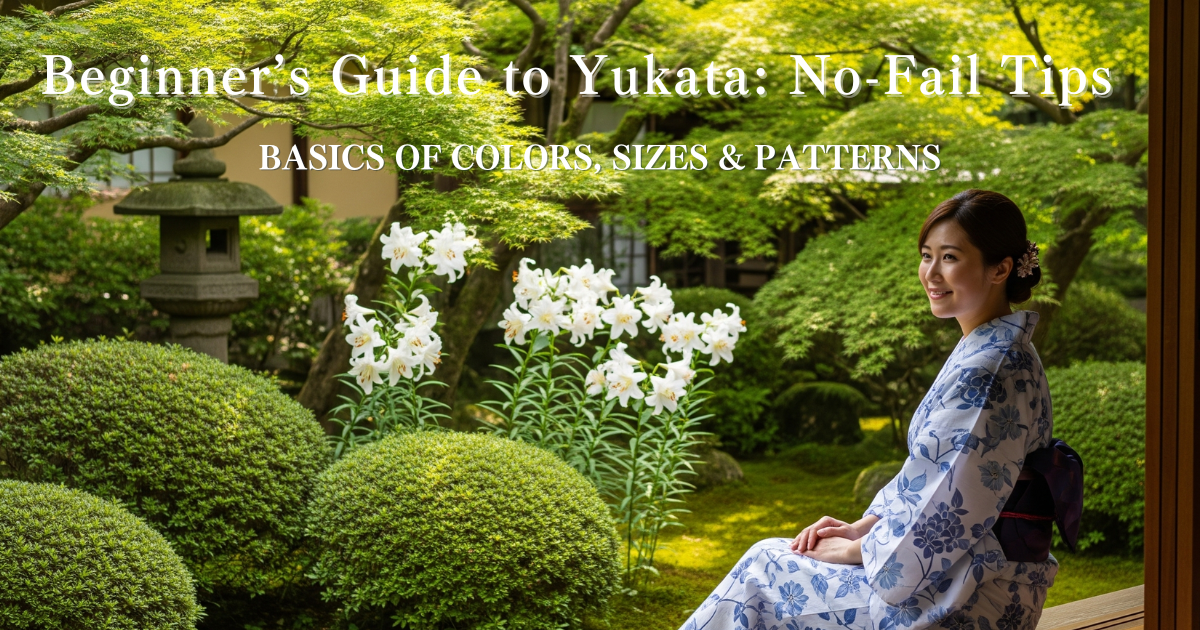This article gently guides beginners through the basics of choosing the perfect yukata by focusing on three key points: color, size, and pattern.
You’ll find plenty of tips to help you discover the ideal yukata for summer festivals and fireworks displays.
3 Key Tips to Avoid Mistakes When Choosing a Yukata

Let’s start with the basics you should keep in mind when selecting a yukata: color, size, and pattern.
By understanding these key points, you’ll have a much easier time finding a yukata that suits you—and your overall look will appear far more polished and refined.
Find the Right Color That Suits You
Color is one of the most important elements when choosing a yukata, as it greatly influences your overall impression.
The first thing to consider is the balance with your skin tone and hair color.
For example, if you have a warm, yellow-toned complexion, beige, brown tones, or warm colors like red and orange will complement you beautifully.
On the other hand, if your skin has a cooler, bluish tone, cool shades such as navy, gray, or blue will enhance your appearance.
A yukata is also an item that reflects the season.
To evoke a fresh and summery feel, traditional colors like navy and white, as well as soft pastel shades, are excellent choices.
Gentle colors that shine in the evening breeze give a refined and composed look.
For beginners, solid colors or single-tone yukata with minimal patterns are easier to coordinate.
Since the color covers a wide area, it creates a clean and cohesive appearance.
You can add a personal touch with a bold obi (sash) or accessories to complete your own unique look.
These understated yet elegant color choices are also popular among mature women.
Choose Based on Your Skin Tone
Referring to your personal color palette is a helpful way to find a yukata that complements your skin tone and overall appearance.
| Type | Features | Yukata Colors That Suit You |
|---|---|---|
| 🌸 Spring | Bright, warm-toned skin with soft hair color | Coral pink / Cream / Turquoise |
| ❄️ Summer | Cool-toned, fair skin with reddish hair | Lavender / Smoky blue / Grayish pink |
| 🍁 Autumn | Warm-toned skin with a muted, calm undertone | Mustard / Khaki / Terracotta |
| 🌌 Winter | Cool, pale skin with sharp facial features | Black / Royal blue / Wine red |
Choose Colors That Reflect the Season
To capture the feeling of summer festivals and fireworks, opt for colors that evoke a refreshing atmosphere.
- Traditional summer tones like navy, white, and pastels are ideal
Solid or One-Tone Yukata for Beginners
If you’re unsure about patterns, starting with a simple solid or one-tone yukata is a great choice.
- Creates a clean and coordinated look
- Easy to accent with an obi or accessories
Check the Right Fit for Your Yukata
When choosing a yukata, size is something that is often overlooked.
To ensure a beautiful silhouette and prevent it from becoming messy while wearing,
the balance of three key measurements—length (mitake), sleeve length (sodetake), and sleeve-to-sleeve width (yukitake)—is essential.
For mitake (overall length), a good rule of thumb is to choose one about the same height as your body.
You can adjust the fit by creating an ohashori fold at the waist.
Yukitake (sleeve-to-sleeve) is measured from the base of your neck to your wrist.
Ideally, the sleeve should reach around the wrist bone when your arms are down.
Sodetake (sleeve length) is typically around 49 cm for yukata.
You don’t have to be overly precise, but if it’s too short, it may give off a childish impression.
🔸 For petite individuals, choose a smaller size or a free-size yukata that can be altered to fit.
Opting for patterns with finer details helps maintain visual balance.
🔸 For taller individuals, if the length is too short, it can look awkward and ill-fitting.
To avoid this, go for longer lengths or larger sizes for a better overall appearance.
If you’re shopping online and can’t try on the yukata in person,
refer to the key points below to help you make the right choice and avoid common mistakes.
Tips for Choosing the Right Yukata Size
- Mitake (Length): The length from the shoulder to the hem. Ideally, it should match your height or be slightly longer to allow for an ohashori fold.
- Mihaba (Width): Choose a width that fits your body shape to prevent the yukata from coming undone.
※ Mihaba = Front width + Okumi width + Back width - Sodetake (Sleeve length): If the sleeves are too short, the balance can look off. Make sure the sleeve length suits your height.
- Choose a size that fits your body type: Select from S, M, L, or free size based on your body shape.
- Recommended sizes by height:
S size: 145–155 cm / M size: 155–165 cm / L size: 165–172 cm

Consider the Pattern’s Impression and Suitability for the Occasion
The overall impression of a yukata can vary greatly depending on its pattern.
Choosing a design that matches your body shape and suits the occasion is key to looking your best.
▶ Bold Patterns vs. Small Patterns: Matching Your Body Type
Large, bold patterns tend to draw attention and create a vibrant, eye-catching impression.
They are recommended for taller individuals or those confident in their figure.
On the other hand, smaller patterns give a more elegant and subdued look,
making them ideal for those with a petite frame or anyone who prefers a more modest style.
🔹What Is a Bold Pattern (“Ōgara”) Yukata?
Characteristics:
This style features large, boldly arranged patterns such as flowers, leaves, or geometric shapes.
Each design element is big and visually striking, making the entire yukata stand out.
Impression:
- Elegant and modern look
- Great for photos and perfect for social media
- Creates a clean, streamlined silhouette (thanks to emphasized vertical lines)
Recommended For:
- Tall individuals or those with a strong bone structure
- Anyone who wants to enjoy a mature and unique yukata style
Styling Tip:
Pair it with simple obi and accessories to let the pattern take center stage
🔹What Is a Small Pattern (“Kogara”) Yukata?
Characteristics:
This style features small-scale patterns like delicate flowers or traditional motifs spread across the fabric.
Designs may be evenly arranged or scattered in a more playful layout.
Impression:
- Graceful and elegant look
- Classic and calm atmosphere
- Gives off a soft and approachable vibe
Recommended For:
- Petite individuals or those who want to express a gentle, feminine feel
- Anyone who loves cute, modest, or retro-style yukata
Styling Tip:
Pairing with lace accessories or a hanhaba obi (narrow obi) in a sweet tone complements the overall look beautifully.
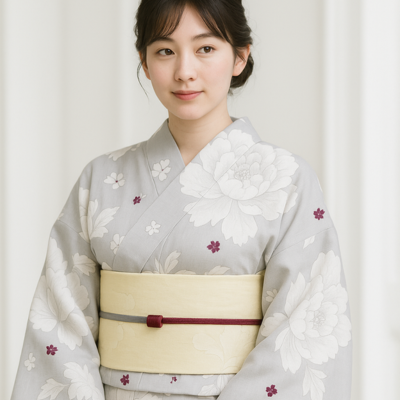
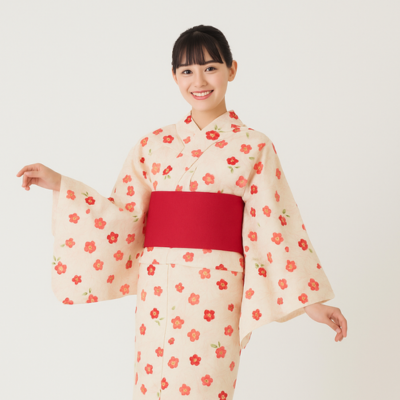
▶ Differences Between Traditional and Modern Patterns
Traditional patterns—such as asanoha (hemp leaf), asagao (morning glory), goldfish, or flowing water motifs—
carry a classic Japanese aesthetic and convey elegance and refinement.
They are widely loved across all age groups and are especially reassuring choices for yukata beginners.
Modern patterns—including geometric designs, Western flowers, or Scandinavian-inspired motifs—
allow for greater self-expression and are perfect for those who value fashion trends,
particularly among younger generations.
🔹Traditional Patterns (Koten-gara)
Characteristics:
These designs are based on time-honored Japanese motifs and seasonal plants.
Many of them carry cultural meanings or symbolize good fortune and tradition.
Representative Motifs:
- Asanoha (hemp leaf)
- Ichimatsu (checkered pattern)
- Shippō (seven treasures)
- Traditional Japanese flowers such as cherry blossoms, plum, and chrysanthemums
- Cranes, turtles, folding fans, flowing water, and more
Impression:
- Elegant and refined atmosphere
- Reflects the beauty of traditional Japanese aesthetics
- Timeless design loved across generations
Recommended Occasions:
- Traditional summer festivals and fireworks displays
- Tea ceremonies, classical dance, or other Japanese cultural events
🔹Modern Patterns (Modan-gara)
Characteristics:
These designs incorporate Western influences, abstract elements, and vibrant colors,
bringing a fresh and contemporary feel to the yukata.
Pattern size and placement are often freeform and highly expressive.
Representative Motifs:
- Abstract floral patterns (such as Scandinavian-inspired designs)
- Geometric shapes, polka dots, and stripes
- Animal motifs, fruit designs, and Western flowers (like roses or ranunculus)
- Bold layouts with colorful, eye-catching palettes
Impression:
- Cute, stylish, and unique
- Casual and modern look
- Perfect for social media posts and eye-catching photos
Recommended Occasions:
- Outings with friends or café hopping
- Fashion events and photo shoots
- Yukata festivals for young people or modern summer celebrations
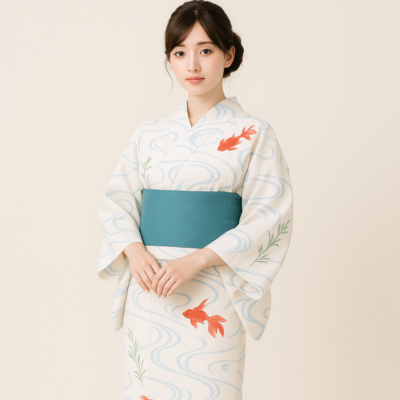
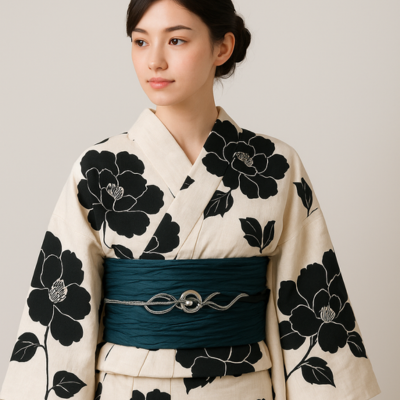
▶ Recommended Patterns by Occasion
🔹Fireworks Displays and Summer Festivals: Bold or Modern Patterns
A yukata with vibrant colors and striking designs is perfect for enjoying lively summer events to the fullest.
These styles are especially suited for younger crowds and ideal for taking eye-catching photos.
🔹Strolling Around Town or Visiting Cafés: Small or Natural Patterns
With subtle designs and calm color palettes, these yukata offer a relaxed, casual style for adults.
Perfect for outings with friends or everyday wear during the summer season.
🔹Traditional Events: Classic Patterns and Elegant Colors
A graceful yukata featuring traditional Japanese flowers on a black background creates a refined and dignified impression.
Ideal for tea ceremonies, cultural gatherings, or more formal summer occasions.
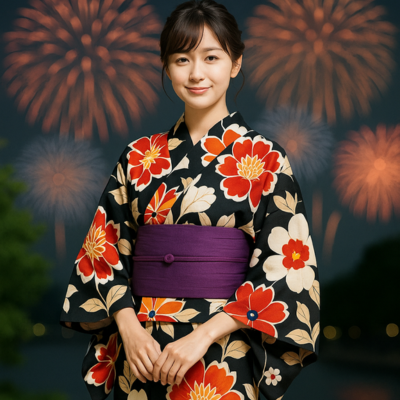
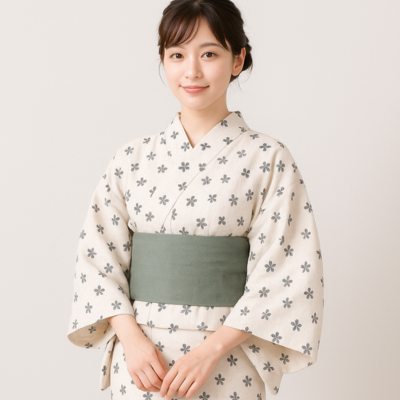
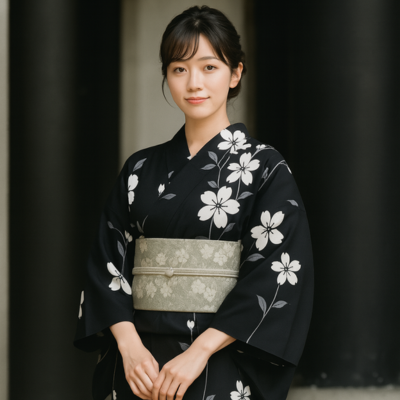
Choosing the right pattern is also a way to express your personal style.
Be mindful of the occasion, and pick a yukata that lifts your mood and brings out your true self.
Once you’ve found your favorite yukata, be sure to take good care of it after wearing.
▶ Don’t forget to check out How to Fold a Yukata Properly – Easy Photo Guide for simple step-by-step instructions!
If You’re Worried About Dressing, Try a “Separate Yukata”
If you’re unsure about whether you can dress yourself in a yukata,
a “separate-style yukata” is a great option to consider.
This two-piece design consists of a top and a skirt,
making it much easier to wear—especially for beginners.
There’s no need to worry about complicated steps or adjusting waist ties;
you can slip it on just like regular clothing.
In recent years, more stylish and authentic-looking designs have become available.
Thanks to advantages like “less likely to come undone” and “quick to wear,”
this type is also perfect for travel, summer festivals, or any last-minute outing.
If you want to enjoy your first yukata experience casually and with ease,
starting with a separate-style yukata might be the perfect choice.
Yukata Outfit Ideas Recommended for Beginners

Here are some easy-to-try and foolproof yukata outfit ideas,
perfect for those wearing a yukata for the first time.
▶ Timeless Style That Appeals to Everyone
A classic and elegant look with a fresh, clean feel—
perfect for standing out beautifully under the night sky during fireworks displays.
A bold floral pattern adds a touch of glamour—
a timeless, charming style that’s sure to be loved by all.
A refined yet radiant summer look that balances elegance and charm—perfect for a mature style.
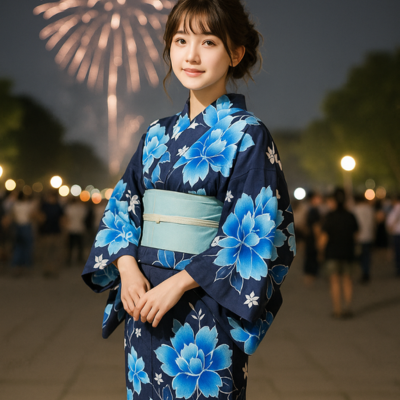

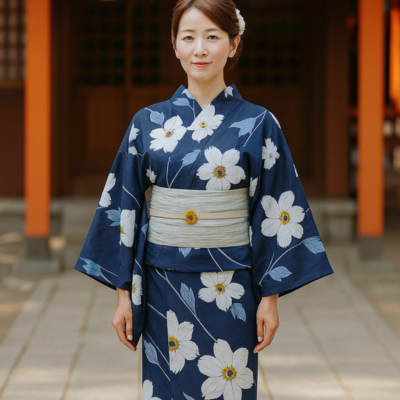
▶ Effortlessly Cute and Grown-Up Style
A classic summer look that brings out your cheerful charm and sweet femininity.
A retro floral pattern that pairs beautifully with city streets—
a slightly grown-up style with a touch of sophistication.
A graceful and radiant “yukata beauty” look,
brought to life with elegant, muted tones.
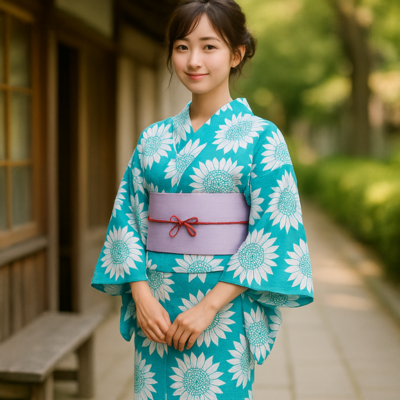
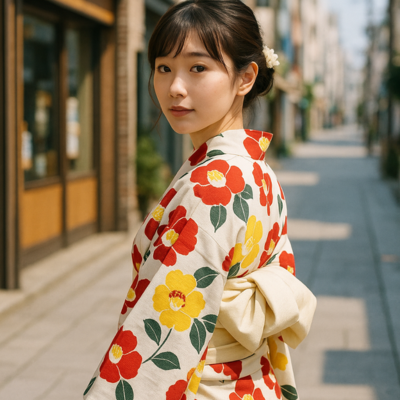
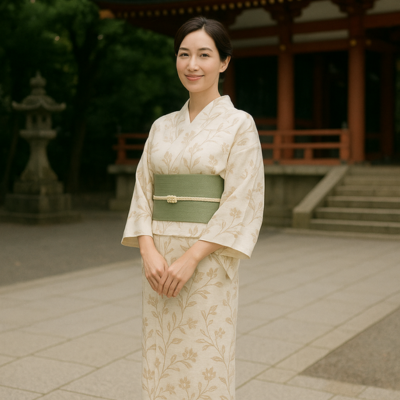
The type of obi you choose—whether it’s a heko obi, pre-tied obi, or hanhaba obi—can greatly affect your overall look.
▶ Check out How to Choose the Right Obi for Your Yukata – Differences Between Hanhaba, Heko, and Pre-Tied Styles
to find the one that suits you best.
Summary|The Best Yukata Is the One That Reflects Your True Self
When you’re unsure how to choose your yukata outfit,
it’s helpful to start with either a timeless style that appeals to everyone
or a look that feels naturally cute and true to you.
Let’s take a quick look back at the charm of each.
Timeless styles never fail!
A navy yukata with floral patterns is universally flattering across all age groups.
It’s a classic choice that shines in summer festivals and fireworks—and looks amazing in photos.
Soft, natural charm is effortlessly cute
Pair a light-colored yukata with a muted-tone obi to create a relaxed and refined look without trying too hard.
Choose based on your age and vibe
From teens to those in their 30s, certain colors and patterns suit each stage of life.
Consider the overall balance—including hairstyle and accessories—for a well-coordinated look.
This summer, find a yukata that truly reflects who you are—
and enjoy adding a little something special to your everyday life.
▶ Related Yukata Articles You May Also Like
【Complete Guide】 How to Fold a Yukata Properly – Easy Photo Instructions
A simple folding method for beginners to help keep your yukata beautiful for years to come.
How to Choose the Right Obi – Differences Between Hanhaba, Heko, and Pre-Tied Obi
Learn how to pick the perfect obi and make yukata coordination even more fun.
What’s the Difference Between a Kimono and a Yukata? – Materials, Styling, and Occasions
Understand the basics so you can enjoy wearing your yukata with confidence.
